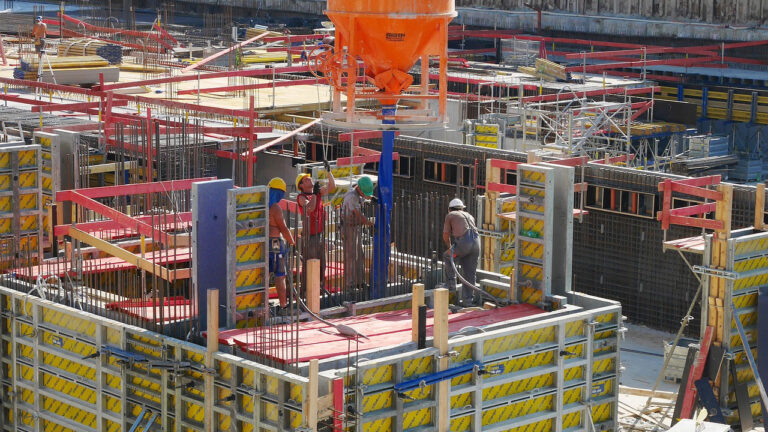In the construction world, every material choice impacts not just the project at hand but the industry. For decades, timber-based shuttering has been the default choice for formwork. It’s familiar, widely available, and seemingly cost-effective—until you factor in material degradation, frequent replacements, and the long-term environmental cost of deforestation.
Imagine a solution that lasts longer, performs better, and aligns with sustainability goals. That’s where plastic shuttering steps in.
If you’re a builder or contractor considering the shift from timber to plastic shuttering, this guide will help you navigate the transition seamlessly.
Why Builders Are Moving Away from Timber Shuttering
The construction industry is evolving, and traditional materials are being re-evaluated. Timber-based shuttering, including conventional plywood and MDF boards, has served its purpose for years, but the limitations are hard to ignore:
- Limited Reusability – Traditional plywood often lasts only 8 to 12 repetitions before warping, swelling, or breaking.
- Moisture Absorption – Wood absorbs water, leading to unpredictable expansion and contraction, affecting formwork accuracy.
- Labour & Replacement Costs – Frequent repairs and replacements add hidden project costs.
- Environmental Impact – Deforestation is a growing concern; every plywood sheet contributes to resource depletion.
Builders who want to stay ahead of the curve are now adopting plastic shuttering boards because they are cost-efficient, sustainable, and operationally excellent.
Understanding Plastic Shuttering: What Makes It Different?
Unlike timber, plastic shuttering sheets offer:
- High Durability – Recycled plastic shuttering sheets can last over 50 repetitions, significantly reducing material wastage.
- Water Resistance – These sheets do not absorb water, making them ideal for humid and wet conditions.
- Consistent Performance – Unlike wood, plastic does not warp, swell, or crack, ensuring precise formwork every time.
- Sustainability – Using recycled plastic boards diverts plastic waste from landfills and reduces the demand for virgin timber.
- Easy Handling & Cleaning – With smooth surfaces, plastic plywood sheets require minimal maintenance, saving both time and effort on site.
This isn’t just a material upgrade—it’s a fundamental shift in construction.
Making the Transition: A Step-by-Step Guide for Builders
Step 1: Understand the Types of Plastic Shuttering Available
Different projects demand different materials. Here’s how plastic shuttering for concrete varies:
- Recycled Plastic Shuttering Sheets – Sustainable, cost-effective, and designed for multiple uses.
- Plastic Plywood Sheets – Ideal for those transitioning from plywood but looking for better durability.
- PVC Centring Sheets – Popular for slab centring and reusable across multiple projects.
Choosing the right material ensures optimal performance and cost savings.
Step 2: Identify Key Applications
Where can plastic shuttering boards replace traditional plywood?
- Column and Beam Shuttering – Ensures smooth, consistent finishes without warping.
- Slab and Floor Formwork – Withstands heavy loads while maintaining shape.
- Retaining Walls and Foundations – Works effectively in water-exposed conditions.
- Circular and Complex Structures – Flexible options like 6mm recycled plastic sheets allow for curved shuttering.
You can determine where plastic will offer the most immediate benefits by assessing your typical projects.
Step 3: Calculate the Long-Term Cost Advantage
One of the biggest hesitations builders have is cost perception. Yes, the upfront cost of plastic shuttering sheets may be higher than plywood. But the savings become clear when you factor in lifespan, reusability, and reduced labour costs.
Let’s break it down:
| Material | Avg. Cost Per Sheet (₹) | Repetitions | Cost Per Use (₹) |
| Plywood | 1000 – 2000 | 8 – 12 | 100 – 250 |
| Plastic Shuttering | 1500 – 2500 | 50+ | 30 – 50 |
In just one project cycle, plastic shuttering already outperforms plywood in cost efficiency.
And let’s not forget—fewer replacements mean less waste and less procurement hassle.
Step 4: Train Your Team for Smooth Adoption
Transitioning to a new material isn’t just about procurement—it’s about ensuring your team knows how to handle and maximise its benefits.
- Storage & Handling – Plastic sheets don’t require the same level of protection as wood but should still be stacked properly.
- Cutting & Customisation – Unlike plywood, some plastic shuttering boards can be cut and reused without affecting durability.
- De-Shuttering & Reuse – With minimal maintenance, these sheets can be used across multiple projects without compromising quality.
A small learning curve leads to big operational improvements.
Step 5: Choose a Reliable Supplier
Not all plastic shuttering is created equal. To get the best results, look for:
- High-Quality Recycled Boards – Ensure sheets are made from durable, construction-grade plastic.
- Proven Track Record – Work with suppliers who have experience in the construction sector.
- Customisation Options – Different thicknesses and sizes cater to various applications.
If you’re ready to purchase plastic shuttering, partner with a trusted supplier that aligns with your sustainability and performance goals.
The Future of Shuttering Is Here
Every builder wants efficiency, durability, and cost savings—and plastic shuttering delivers on all fronts. But more than that, this shift represents a responsibility.
The world is watching industries that take bold steps toward sustainability. Moving away from timber isn’t just about better materials—it’s about leading by example.
The question is no longer whether plastic shuttering will replace timber. It’s when. And the builders who make the switch early will lead the industry forward.
Are you ready?
If you’re looking to transition from plywood to recycled plastic shuttering sheets, explore our range of high-performance plastic shuttering boards designed for 40+ repetitions. Visit WoWMaterials today and take the next step towards cost-efficient and sustainable construction.

